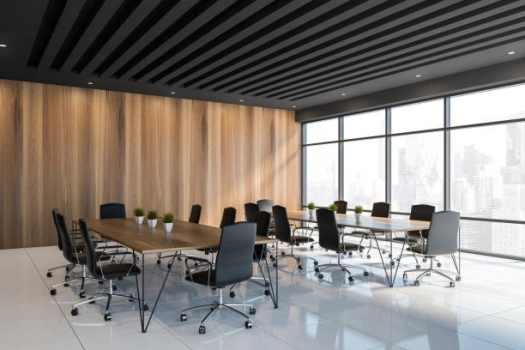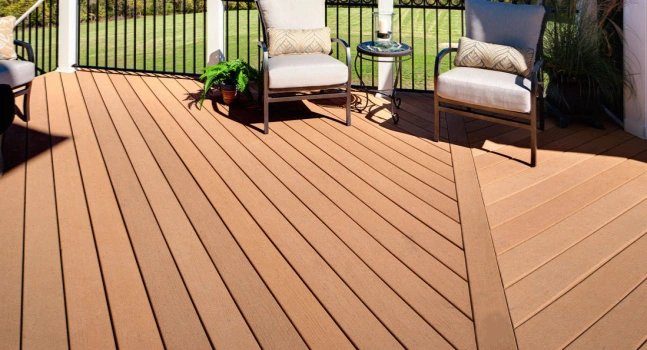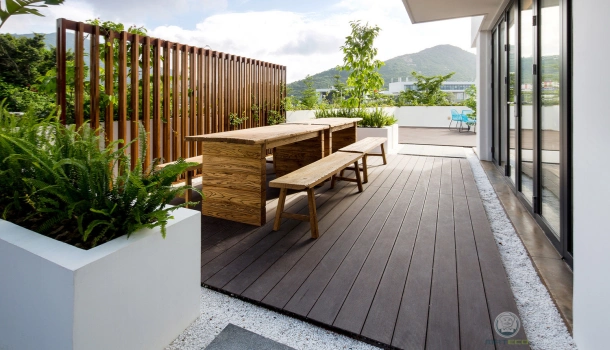What Is Composite Panelling?
Today, I'm diving deep into a topic that's gaining momentum in the world of interior and exterior design – composite panelling, with a special focus on Wood Plastic Composite (WPC), one of the most popular materials in this category.
What is Composite Panelling?
Composite panelling is an innovative hybrid material that blends wood fibers with plastic. This fusion creates a product that combines the aesthetic appeal of wood with the enhanced durability and sustainability of plastic. The utilization of recycled materials in composite panelling highlights its role in sustainable building practices, offering an environmentally friendly alternative to traditional materials.
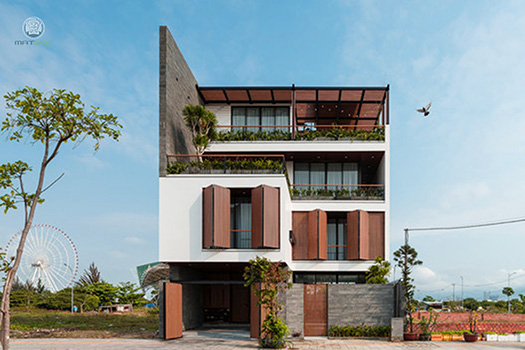
2. History and Evolution of Composite Panelling
The development of composite materials can be traced back to the search for more durable building materials. Initially, these composites were rudimentary, but they laid the foundation for future innovations.
Advancements Over Time
Over the years, composite materials have evolved significantly. Today's Wood Plastic Composite (WPC) panels are the culmination of technological advancements in material science, offering superior durability and functionality compared to their early predecessors.
3. Types of Composite Panelling
Varieties of Composite Panelling
Composite panelling, a versatile building material, encompasses a range of products each designed to meet specific aesthetic and functional needs. The variety in these panels primarily stems from differences in material composition, which directly influences their properties and applications. Here, we explore the primary types of composite panelling, focusing on their unique features and uses:
Wood Plastic Composite (WPC) Panels
Composition: A blend of wood fibers and thermoplastics, often including recycled materials.
Properties: WPC panels are celebrated for their wood-like appearance and texture, combined with the durability and moisture resistance of plastic.
Uses: Commonly used in outdoor applications like decking, fencing, and garden furniture, as well as indoor features like wall cladding.
Fiber-Reinforced Plastic (FRP) Panels
Composition: Typically made of a plastic matrix reinforced with fibers, such as glass, carbon, or aramid.
Properties: FRP panels are known for their high strength-to-weight ratio, corrosion resistance, and dimensional stability.
Uses: Often used in industrial and transportation sectors for applications requiring high strength and low weight.
Aluminum Composite Panels (ACP)
Composition: Consists of two aluminum sheets bonded to a non-aluminum core, usually polyethylene.
Properties: ACPs are lightweight yet strong, with excellent durability and weather resistance.
Uses: Primarily used in exterior building cladding, signage, and insulation.
Why WPC Stands Out
Wood Plastic Composite (WPC) is distinguished by its strength, durability, and aesthetic versatility. It effectively balances the best qualities of wood and plastic, making it a preferred choice in many applications.
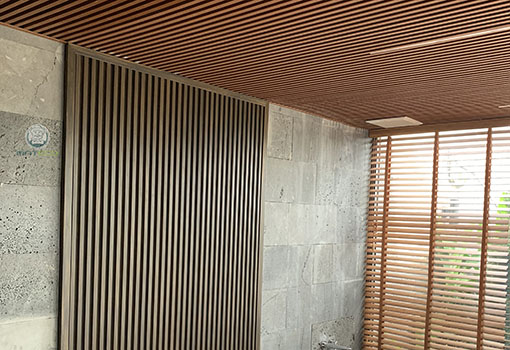
4. Benefits and Advantages of Composite Panelling:
WPC is known for its resistance to weather, rot, and insects, making it a long-lasting material choice.
Low Maintenance Needs
Unlike traditional wood, WPC does not require frequent painting or sealing, reducing upkeep efforts and costs.
Aesthetic Appeal
WPC offers a variety of designs and finishes, mimicking natural wood textures and colors while providing greater durability.
5. Practical Applications of Composite Panelling
Exterior Uses
Ideal for outdoor settings, WPC is extensively used in decking, fencing, and outdoor furniture due to its robustness and weather resistance.
Interior Uses
WPC is also suitable for interior applications like wall coverings, ceilings, and decorative panels, adding a touch of elegance and warmth to indoor spaces.
6. Installation and Maintenance of Composite Panelling: User’s Guide
Installation Tips
WPC can be easily worked with standard tools, allowing for cutting, drilling, and fastening similar to traditional wood.
For more detailed installation instructions, please contact us
Maintenance and Care
Simple cleaning with soap and water is sufficient for WPC, marking a significant reduction in maintenance compared to traditional wood products.
Conclusion:
In the dynamic world of construction and design, WPC composite panelling stands as a testament to innovation, marrying the beauty of wood with the resilience of plastic. It's a testament to the progress in sustainable building materials, offering a practical, stylish, and eco-friendly solution for modern design challenges.
What's your perspective on WPC? Would you consider it for your next project?
If you are looking for a WPC manufacturer, MATECO WPC will be your best choice.
Website: https://www.matecowpc.com
WhatsApp: +86-13380085620
Email: info@matecowpc.com




